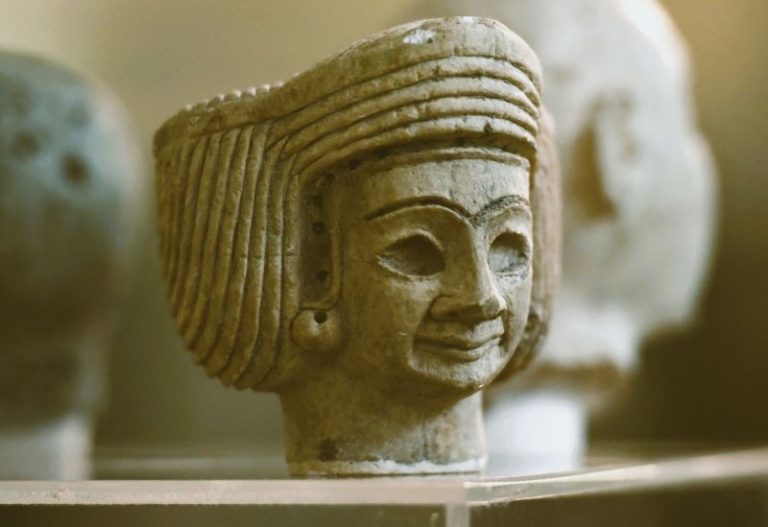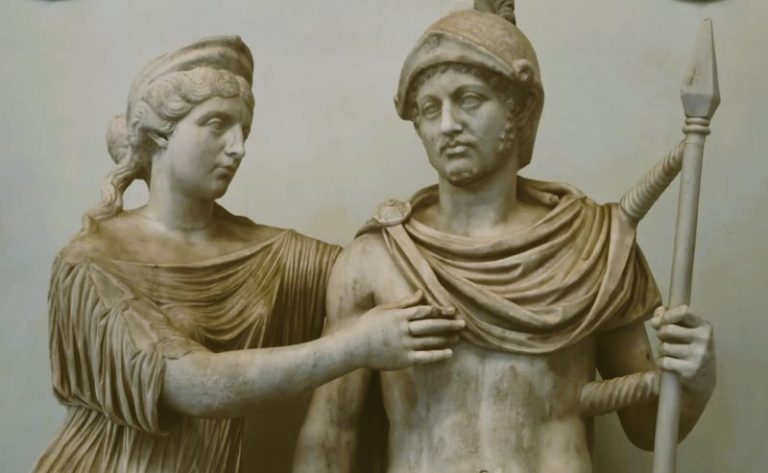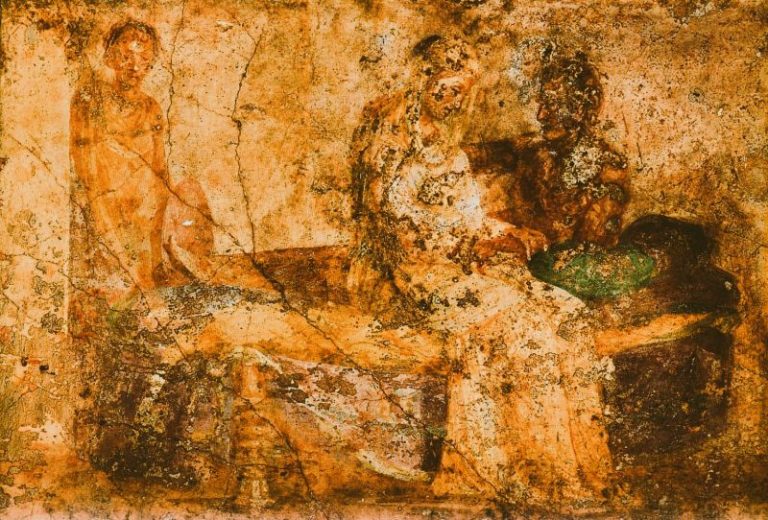
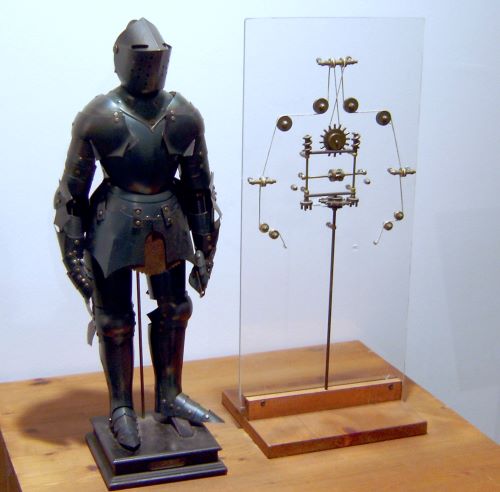
It represents a fusion of art, science, and engineering.

By Matthew A. McIntosh
Public Historian
Brewminate
Introduction
Leonardo da Vinci (1452–1519), the quintessential Renaissance polymath, is celebrated for his extraordinary talents in art, science, anatomy, engineering, and invention. Among his numerous creations and conceptual designs, one of the most fascinating and lesser-known projects is his Mechanical Knight, often referred to as Leonardo’s robot or automaton. This mechanical knight stands as a testament to Leonardo’s ingenuity and visionary grasp of mechanics, robotics, and human anatomy centuries ahead of its time.
Historical Context and Origins
Leonardo da Vinci’s Mechanical Knight was conceived during the Italian Renaissance, a period characterized by an extraordinary flourishing of arts, sciences, and humanistic inquiry across Europe, particularly in Italy. The Renaissance, spanning roughly the 14th to the 17th century, marked a revival of classical learning and a newfound emphasis on empirical observation and mechanical innovation. Leonardo himself was a product of this era’s intellectual ferment, combining his skills as an artist, anatomist, and engineer to explore new frontiers in technology. His Mechanical Knight project emerged within this context as an embodiment of Renaissance ideals, demonstrating the era’s fascination with blending art and science to emulate and surpass nature. The knight was not merely a curiosity; it was a reflection of the period’s broader quest to understand the human form and mechanics, aligning with the Renaissance pursuit of knowledge through observation, experimentation, and creativity.1
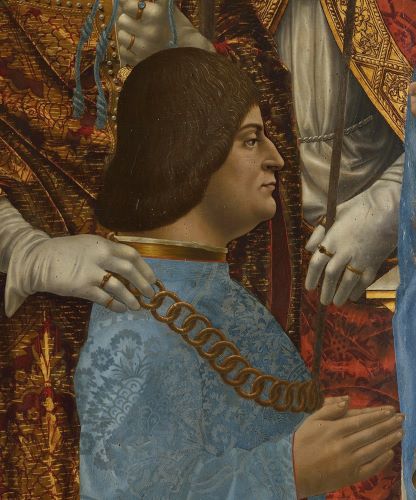
The origins of the Mechanical Knight are closely tied to Leonardo’s tenure in Milan under the patronage of Ludovico Sforza, Duke of Milan, from 1482 until 1499. This period was one of Leonardo’s most productive and is notable for his dual engagement in artistic masterpieces and engineering projects. The Duke was a keen patron of the arts and technology, employing Leonardo not only as a painter and sculptor but also as a military engineer and inventor. Within the highly competitive political and military environment of northern Italy, Leonardo’s skills were called upon to design weapons, fortifications, and machines of war. The Mechanical Knight likely served a dual purpose: as a demonstration of technological prowess and possibly as a piece of courtly entertainment or propaganda, showcasing Milan’s advanced engineering capabilities and its ruler’s patronage of innovation.2 This melding of martial utility and spectacle was typical of Renaissance courts, where technological marvels often doubled as symbols of power.
Leonardo’s extensive anatomical studies played a foundational role in the design of the Mechanical Knight. By dissecting human bodies and studying musculature, bone structure, and joint mechanics, Leonardo sought to understand the principles underlying human motion. His notebooks are filled with detailed sketches that reveal a deep anatomical knowledge rarely matched in his time. This knowledge informed the knight’s mechanical design, which attempted to replicate human movement through a system of pulleys, cables, and gears. The knight was engineered to simulate actions such as sitting, moving its arms, and raising its visor, indicating Leonardo’s aim to achieve lifelike motion through mechanical means. This endeavor highlights the Renaissance fascination with automata and mechanical figures, which were celebrated as wonders of art and science. However, Leonardo’s approach was unique for its scientific rigor and anatomical accuracy, linking his Mechanical Knight to a broader tradition of automata while pushing the boundaries of contemporary engineering.3
Automata, or self-operating mechanical devices, had a long history predating Leonardo, especially in Hellenistic and Islamic civilizations, where engineers like Heron of Alexandria designed mechanical birds and theatrical devices. In medieval Europe, mechanical clocks and rudimentary automata figures appeared in cathedrals and royal courts. Yet, the Renaissance represented a significant shift, integrating classical knowledge with innovative mechanics and human anatomy. Leonardo’s Mechanical Knight emerged within this lineage but was unprecedented in its complexity and conceptual sophistication. It synthesized the period’s engineering advances with the naturalistic art that defined the Renaissance. By designing a humanoid machine capable of multiple movements, Leonardo anticipated the modern concept of robotics, transcending previous automata’s decorative or symbolic roles to create a practical study of mechanical function grounded in biology.4
Despite the brilliance of the design, it is unclear whether Leonardo ever built a working prototype of the Mechanical Knight during his lifetime. The evidence of the knight exists primarily in sketches found in the Codex Atlanticus and other notebooks, with no definitive record of a completed machine. Nonetheless, the very conception of such a device during the late 15th century underscores Leonardo’s role as a pioneer of mechanical engineering and robotics. His Mechanical Knight can be viewed as both a product of its historical context—reflecting the Renaissance ideals of knowledge, invention, and artistic mastery—and a visionary precursor to modern technology. The rediscovery and reconstruction efforts in the 20th and 21st centuries have confirmed the feasibility of his designs, cementing the knight’s place as a landmark in the history of engineering and human creativity.5
Description and Design
da Vinci’s Mechanical Knight was a humanoid automaton designed with remarkable anatomical precision and mechanical complexity for its time. Its external appearance resembled a medieval knight clad in full armor, reflecting the martial culture of Renaissance Italy as well as the artistic interests of Leonardo’s patrons. The armor itself was functional in the sense that it encased the mechanical components within, giving the machine a lifelike and imposing presence. According to Leonardo’s sketches, the knight was capable of sitting upright on a chair, raising its visor, and moving its arms in a waving gesture. This level of articulation was achieved through an internal structure made of wood and metal, demonstrating Leonardo’s expertise in combining artistry with engineering. The knight’s ability to perform such motions would have made it a spectacular display piece at court, merging theatricality with scientific innovation.6
At the heart of the Mechanical Knight’s design was a sophisticated system of pulleys, cables, and gears that translated mechanical energy into controlled human-like movements. Leonardo employed a network of tendons and joints that mimicked the human musculoskeletal system, allowing the arms to bend at the elbows and the hands to open and close. The movements were powered manually by turning cranks, which in turn manipulated the internal cables. This cable-driven mechanism was revolutionary, anticipating later developments in biomechanics and robotics. Detailed studies of the knight’s internal components, preserved in the Codex Atlanticus, reveal Leonardo’s careful attention to the proportions and functionality of each joint, illustrating his deep understanding of human anatomy as well as mechanical principles.7
The design of the knight’s joints was particularly advanced. Leonardo applied his knowledge of the skeleton and muscle groups to create articulated limbs that could move with a degree of naturalism unusual for mechanical devices of the time. For example, the shoulder joints were designed to rotate in multiple directions, while the elbows used hinge mechanisms allowing flexion and extension similar to human arms. The knight’s hands were capable of grasping motions, operated by a series of cables that functioned as artificial tendons. Even the head and neck were designed to pivot, enabling the knight to look around or lift its visor. This anatomical fidelity set Leonardo’s automaton apart from earlier, more rudimentary mechanical figures, placing it at the cutting edge of Renaissance engineering.8
The Mechanical Knight’s design also reflected Leonardo’s holistic approach to invention, blending aesthetics, functionality, and symbolic meaning. The knight was not merely a machine but an artistic object embodying the Renaissance ideals of harmony between man and machine, art and science. The armor and the mechanical components were integrated seamlessly, indicating Leonardo’s dual role as artist and engineer. Furthermore, the seated posture of the knight may have been chosen for both stability and symbolic reasons, presenting the automaton as a regal and dignified figure, ready for courtly display or even as a representation of the idealized warrior. This careful balance of form and function highlights Leonardo’s unique vision of technology as a living art form.9
Modern reconstructions of Leonardo’s Mechanical Knight, based on his original drawings, have confirmed that the design was mechanically feasible and could replicate many of the movements Leonardo envisioned. In 2002, engineers at the Leonardo3 Museum in Milan successfully built a working model that could sit down, wave, and move its head, validating Leonardo’s extraordinary mechanical foresight. While the original knight was probably never constructed during Leonardo’s lifetime, these reconstructions demonstrate the accuracy and innovation of his design concepts. They also emphasize the knight’s importance as an early example of robotics and as a symbol of the Renaissance synthesis of anatomy, mechanics, and artistry.
Significance and Innovation
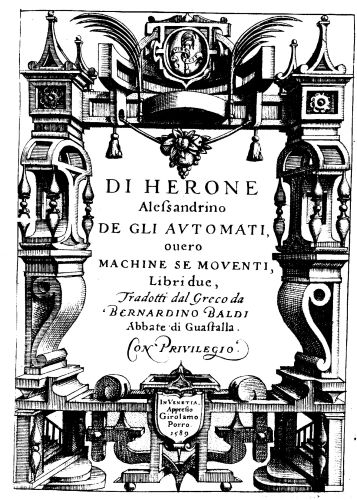
The Mechanical Knight stands as a landmark in the history of engineering and robotics, representing one of the earliest known attempts to mechanize human motion in a lifelike form. Its significance lies not only in the technical ingenuity Leonardo displayed but also in the way the knight embodies the Renaissance spirit of inquiry, blending art, anatomy, and mechanics into a unified vision. At a time when most mechanical devices were simplistic and primarily functional, Leonardo’s design demonstrated a sophisticated understanding of biomechanics that was centuries ahead of its time. The Mechanical Knight can be seen as a direct precursor to modern robotics, symbolizing humanity’s enduring desire to recreate itself through technology.10
One of the most innovative aspects of Leonardo’s knight was its integration of anatomical accuracy with mechanical function. Unlike earlier automata, which often relied on basic gears and cams to produce repetitive motions, Leonardo’s design incorporated principles drawn from his meticulous anatomical studies. By replicating the joint articulations, tendon-like cable systems, and the overall proportions of the human body, he aimed to create a machine capable of a range of naturalistic movements. This approach revealed Leonardo’s unique capacity to fuse his artistic knowledge of the human form with technical engineering, foreshadowing contemporary fields such as biomechatronics and prosthetics.11 The Mechanical Knight was not merely a mechanical puppet but an exploration of how machines might emulate living organisms, a concept that remains foundational in robotics today.
Beyond its technical achievements, the Mechanical Knight carried symbolic and cultural significance in Renaissance Italy. It served as a powerful demonstration of technological mastery, reflecting the ambitions of patrons such as Ludovico Sforza to project power through innovation and spectacle. The knight’s imposing armored figure and lifelike motions would have functioned as both entertainment and propaganda, embodying the Renaissance ideal of the “universal man” who commands both artistic creativity and scientific knowledge. This interplay of art, science, and political symbolism underscores how Renaissance inventions were often deeply embedded in the social and cultural fabric of their time.12 In this sense, the Mechanical Knight was not just a machine but a statement about human potential and the transformative power of technology.
Leonardo’s Mechanical Knight also challenged the contemporary boundaries between man and machine, prefiguring philosophical questions about artificial life and autonomy that resonate even today. By designing a humanoid automaton capable of independent movement, Leonardo explored themes of imitation and animation that have continued to intrigue scientists, engineers, and artists alike. His work anticipated later developments in robotics and artificial intelligence, raising questions about what constitutes life and how human qualities might be reproduced mechanically. This visionary aspect of the knight reflects Leonardo’s broader intellectual curiosity and his willingness to push beyond the technological limits of his era.13 The Mechanical Knight thus occupies a critical place in the history of ideas as well as technology.
Modern reconstructions and scholarly research have confirmed the Mechanical Knight’s practical feasibility, highlighting Leonardo’s extraordinary foresight and technical skill. Although it is uncertain whether the automaton was ever built during Leonardo’s lifetime, detailed studies and replicas demonstrate that the underlying mechanisms could indeed produce the described movements. These reconstructions not only validate Leonardo’s design but also emphasize his enduring legacy as an innovator whose ideas continue to inspire contemporary science and engineering. The Mechanical Knight remains a vivid symbol of the Renaissance ideal—where curiosity, creativity, and technical mastery converge to expand the boundaries of human achievement.
Reconstruction and Modern Interpretation
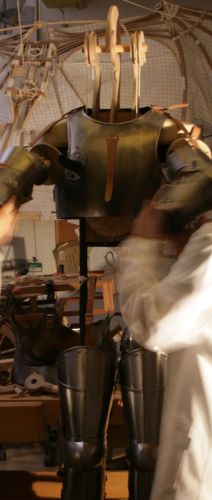
The reconstruction of da Vinci’s Mechanical Knight in modern times has been a fascinating blend of historical scholarship, engineering, and artistry. For centuries, Leonardo’s original designs for the knight remained dormant in his notebooks, primarily the Codex Atlanticus, with no evidence that the device was ever built during his lifetime. However, the detailed sketches and mechanical annotations provided an exceptional blueprint for contemporary engineers and historians to attempt recreating the automaton. The first significant modern efforts began in the late 20th century, as technological advances in materials and engineering allowed researchers to test Leonardo’s concepts practically. These reconstructions not only revived interest in Leonardo’s mechanical ingenuity but also served as proof of concept that his visionary designs were mechanically sound and operationally feasible.
One of the most notable modern reconstructions was undertaken by the Leonardo3 Museum in Milan, which used advanced computer modeling and precision engineering to build a fully functional Mechanical Knight based on Leonardo’s original sketches. This reconstruction demonstrated that the knight could perform several movements Leonardo described, including sitting down, moving its arms, and raising its visor. The project required careful interpretation of Leonardo’s sometimes ambiguous drawings, as well as creative problem-solving to adapt Renaissance-era design to modern materials without compromising authenticity. By successfully animating the knight, the museum provided compelling evidence of Leonardo’s engineering genius and deepened our understanding of Renaissance technology and biomechanics.14
Modern interpretations of the Mechanical Knight also extend beyond engineering to encompass broader cultural and philosophical reflections on Leonardo’s legacy. The automaton has become a symbol of the Renaissance ideal that bridges art and science, highlighting Leonardo’s unique role as a polymath who sought to understand and replicate life through mechanical means. Contemporary scholars often view the knight as a metaphor for the evolving relationship between humans and machines, presaging debates about automation, artificial intelligence, and robotics that continue to this day. The knight’s ability to imitate human gestures invites reflection on questions of agency, identity, and the nature of life itself, making it a powerful cultural icon far beyond its original martial and entertainment functions.15
Academic discussions also emphasize the educational potential of Leonardo’s Mechanical Knight as a tool for exploring Renaissance thought and technological development. By reconstructing and demonstrating the knight, museums and universities engage the public with the historical process of invention and the interdisciplinary nature of Leonardo’s work. This hands-on approach bridges the gap between abstract historical knowledge and tangible experience, allowing audiences to appreciate the complexity and creativity involved in Renaissance engineering. Furthermore, the knight’s reconstruction highlights the importance of preserving and studying historical documents to unlock past innovations that continue to inspire modern technology and design.16
The modern revival of the Mechanical Knight invites ongoing research into Leonardo’s broader contributions to robotics and biomechanics. The automaton exemplifies how Leonardo’s investigations into anatomy and mechanics informed his inventive work, influencing later technological advancements in human-machine interaction. Today, engineers and roboticists look back at Leonardo’s designs not only as historical artifacts but as foundational ideas that anticipated principles used in modern prosthetics, exoskeletons, and humanoid robots. As such, the Mechanical Knight remains a vibrant testament to Leonardo’s visionary genius, continuing to shape the dialogue between past and future technologies.17
Challenges and Limitations
The Mechanical Knight, while a marvel of Renaissance ingenuity, faced significant challenges and limitations both in its conceptual design and practical realization. One major challenge was the technological constraints of the early 16th century. Although Leonardo’s sketches demonstrated an advanced understanding of mechanics and anatomy, the precision manufacturing techniques required to produce the intricate gears, cables, and joints were not fully developed in his time. The materials available—primarily wood, leather, and rudimentary metalwork—posed difficulties for the durability and smooth operation of the complex mechanisms. This meant that even if constructed, the knight might have suffered from mechanical failures or limited range of motion, reducing its reliability and effectiveness as a working automaton.18
Another limitation was the lack of an autonomous power source. Leonardo’s design relied on manual operation, typically involving a crank or lever to animate the knight’s movements. This dependence on human input meant the automaton could not function independently or continuously, restricting its performance to brief demonstrations rather than sustained or complex tasks. Unlike modern robots equipped with electric motors or programmable systems, Leonardo’s knight was essentially a highly sophisticated puppet, constrained by the mechanical and power transmission technologies of its era. This limitation highlights the broader challenges Renaissance engineers faced when attempting to replicate human-like motion without modern energy sources.19
The complexity of the Mechanical Knight’s internal mechanisms also posed significant assembly and maintenance challenges. The intricate system of cables, pulleys, and joints required precise calibration to achieve the desired movements. Small errors in construction or wear over time could easily lead to malfunctions or loss of coordination in the limbs. Given that there is no record of the knight ever being fully built and tested in Leonardo’s workshop, it remains uncertain how well the design could be executed practically. The absence of a complete, functioning model during Leonardo’s lifetime suggests that the ambitious scope of the project may have exceeded the practical skills and resources available to him and his workshop at the time.20
The knight’s design was limited in its range of expressive capability and versatility. While Leonardo’s sketches indicate that the automaton could perform certain basic motions such as waving its arms or moving its head, these actions were relatively simple and repetitive. The lack of sophisticated control systems meant that the knight could not perform complex or varied gestures that would truly mimic human behavior or respond dynamically to its environment. This limitation reflects the early stage of robotic thought during the Renaissance, where machines were conceived more as mechanical curiosities or theatrical devices rather than autonomous agents capable of nuanced interaction.21
The Mechanical Knight’s cultural and functional role as a display piece rather than a practical tool also limited its long-term impact. While it demonstrated Leonardo’s genius and entertained patrons, the automaton did not lead to a broader development of robotics or mechanical servants in the immediate aftermath. The gap between conceptual innovation and widespread application remained vast, and many of Leonardo’s inventions remained theoretical or isolated experiments rather than technologies that reshaped society. This gap underscores the challenges faced by Renaissance inventors in translating visionary ideas into durable, functional machines within the constraints of their historical context.
Conclusion
Leonardo da Vinci’s Mechanical Knight is a remarkable artifact of Renaissance innovation, representing a fusion of art, science, and engineering. It foreshadowed the modern fields of robotics and biomechanics by centuries and demonstrated Leonardo’s unparalleled genius in imagining machines that imitate life. As both a technical challenge and a symbolic statement, the mechanical knight continues to captivate historians, engineers, and enthusiasts alike, reminding us of the boundless curiosity and creativity that defined the Renaissance era.
Appendix
Endnotes
- Charles Nicholl, Leonardo da Vinci: Flights of the Mind (New York: Viking, 2004), 212–215.
- Martin Kemp, Leonardo da Vinci: The Marvellous Works of Nature and Man (Oxford: Oxford University Press, 2006), 143–146.
- Kenneth D. Keele, “Leonardo da Vinci’s Mechanical Knight,” Scientific American, March 2003, 92–97.
- George Sarton, Introduction to the History of Science (Baltimore: Johns Hopkins University Press, 1952), 204–210.
- Domenico Laurenza, “Leonardo’s Robot: The Mechanical Knight and the Renaissance,” Journal of Renaissance Studies 15, no. 3 (2001): 356–360.
- Kemp, Leonardo da Vinci, 148-151.
- Keele, “Leonardo da Vinci’s Mechanical Knight,” 93-95.
- Laurenza, “Leonardo’s Robot,” 358-360.
- Nicholl, Leonardo da Vinci, 218-220.
- Kemp, Leonardo da Vinci, 154-157.
- Keele, “Leonardo da Vinci’s Mechanical Knight,”, 95-97.
- Nicholl, Leonardo da Vinci, 222-225.
- Laurenza, “Leonardo’s Robot,” 362-365.
- Kemp, Leonardo da Vinci, 160-163.
- Laurenza, “Leonardo’s Robot,” 366-369.
- Nicholl, Leonardo da Vinci, 225-230.
- Keele, “Leonardo da Vinci’s Mechanical Knight,” 97-100.
- Kemp, Leonardo da Vinci, 164-166.
- Keele, “Leonardo da Vinci’s Mechanical Knight,” 98-99.
- Laurenza, “Leonardo’s Robot,” 370-372.
- Nicholl, Leonardo da Vinci, 231-234.
Bibliography
- Keele, Kenneth D. “Leonardo da Vinci’s Mechanical Knight.” Scientific American, March 2003, 92–97.
- Kemp, Martin. Leonardo da Vinci: The Marvellous Works of Nature and Man. Oxford: Oxford University Press, 2006.
- Laurenza, Domenico. “Leonardo’s Robot: The Mechanical Knight and the Renaissance.” Journal of Renaissance Studies 15, no. 3 (2001): 356–360.
- Nicholl, Charles. Leonardo da Vinci: Flights of the Mind. New York: Viking, 2004.
- Sarton, George. Introduction to the History of Science. Baltimore: Johns Hopkins University Press, 1952.
Originally published by Brewminate, 06.11.2025, under the terms of a Creative Commons Attribution-NonCommercial-NoDerivatives 4.0 International license.
